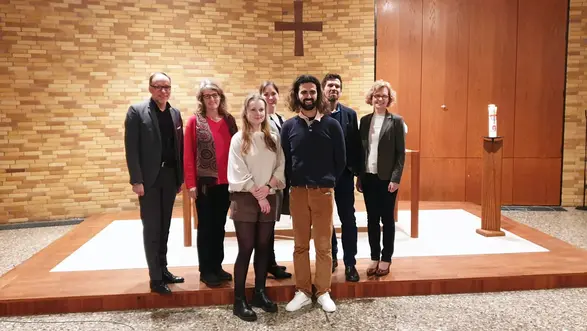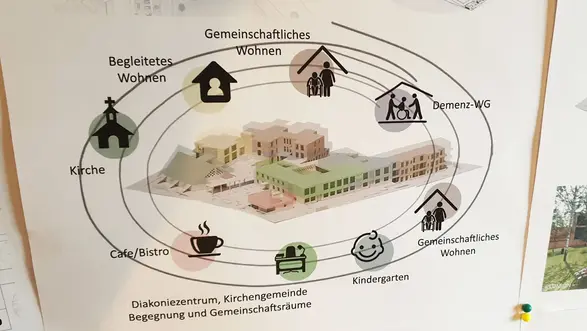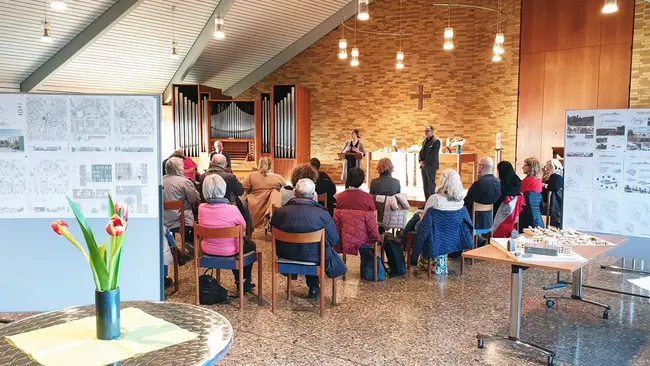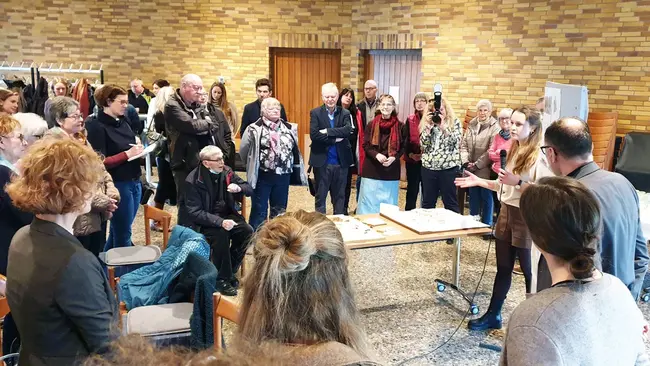Growing old on Gräselberg



Growing old on the Gräselberg
14.02.2023 - "Ageing in the district | Living and living well on the Gräselberg" - this was the title of an invitation issued by the Evangelische Lukasgemeinde Wiesbaden to the local Lukaskirche church to present designs for a redesign of the property around the church. The concepts and models were presented by Master's students from Hochschule RheinMain, who were also exhibiting their final theses in the Architecture | Building Revitalization and Transformation degree program.
The presentation was met with great interest by the parishioners, as it was the first milestone in a project by St. Lukas parish to offer older people the opportunity to remain living on the Gräselberg despite restrictions. "One resident wanted to reserve an apartment right at the start of the process," said Pastor Birte Kimmel, who expressed her gratitude to the students for "giving our dreams space". According to Kimmel, the church is undergoing a process of transformation from a church of the people to a church for the people. A project like this shows the practical arm of the church and gives it hope. This was also confirmed by Oliver Albrecht, Provost of the Rhine-Main Protestant Church, who praised the courageous commitment of all those involved in his welcoming address. In his speech, Christoph Manjura, Head of Social Affairs, highlighted the excellent cooperation between the university, the city and the church.
"Bringing people together"
Affordable living space was at the heart of the project, which was incorporated into the visions for the redesign of the area around the church. It "is the central issue of the next few years", as Agim Kaptelli, Head of Diakonisches Werk Wiesbaden, emphasized. In addition, the integration of a growing childcare center, assisted living, a dementia community and open meeting spaces were part of the task that the 20 architecture students had to work on under the direction of Prof. Dr. Corinna Rohn, Prof. Andreas Fuchs and Prof. Sascha Luippold. "I always wanted to create spatial references so that people could come together," said Julia Schmerbach during her presentation. Parsa Abedin, who shared first place in the open evaluation with Annika Addicks, also focused on encounters in his model: "I designed courtyards with different characters so that people can meet there."

